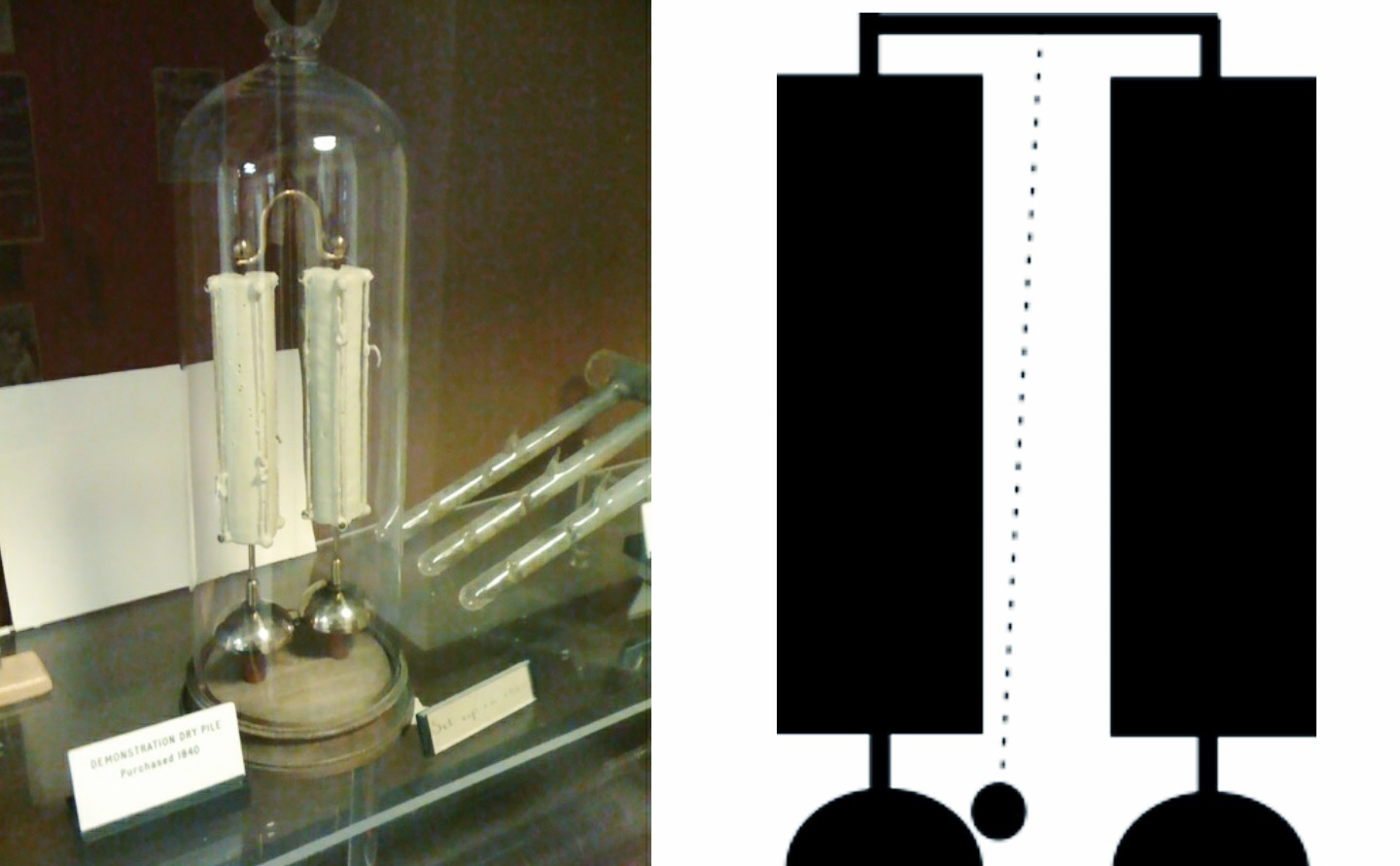In the 1840s, Robert Walker, a priest and physicist, acquired a miracle device in a corridor close to the foyer of the Clarendon Laboratory at the University of Oxford, England. The device is known as the Oxford Electric Bell or Clarendon Dry Pile which is an experimental electric bell that has run continuously ever since it was set up.
The Oxford Electric Bell:

A London instrument-manufacturing firm named Watkins and Hill built the oxford bell in the year 1825, and a note can be seen attached in Robert Walker’s own handwriting that says, “Set up in 1840.”
The Oxford Electric Bell was “one of the first pieces” from a collection of apparatus by Walker. Today, about 179 years after it was embedded, it’s still ringing. But its sound is nearly inaudible because the circulating charge is very low ― the metal ball responsible for the ringing only delicately vibrates between the two bells and that bells are entirely covered under two different layers of clear glass. However, the Oxford Electric Bell is said to have rung over 10 billion times.
How Has The Oxford Bell Been Getting Electricity For Over 179 Years?

The Oxford Bell was built with brass bells, wooden box and glasses. It was made like any other regular bell at that time. But Walker in an experiment, puts Dry Pile, which is basically a proto-type of today’s dry cells, into it to ring itself for a long time.
“The experiment consists of two brass bells, each positioned beneath a dry pile (Dry Pile is a form of battery that could be referred to as the ancestor of the modern dry cell which is used in our cellphone, laptop, etc.), and the pair of piles connected in series. The clapper is a metal sphere approximately 4 mm in diameter suspended between the piles, which rings the bells alternately due to the electrostatic force. As the clapper touches one bell, it is charged by one pile, and then electrostatically repelled, being attracted to the other bell. On hitting the other bell, the process repeats. The use of electrostatic forces means that while high voltage is required to create motion, only a tiny amount of charge is carried from one bell to the other, which is why the piles have been able to last since the apparatus was set up. Its oscillation frequency is 2 hertz.’’
Compositions Of The Oxford Electric Bell Battery:
The exact composition of the dry piles is unknown, and no one has tried to open the device due to it could potentially “ruin an experiment to see how long it will last.’’ However, the known thing about the Oxford Electric Bell’s battery is that they have been coated with molten sulphur for insulation, which is assumed to be made from Zamboni piles.
“The Zamboni pile or also referred to as a Duluc Dry Pile is an early electric battery, invented by Giuseppe Zamboni in 1812. It is an “electrostatic battery” and is constructed from discs of silver foil, zinc foil, and paper. Alternatively, discs of “silver paper” (paper with a thin layer of zinc on one side) gilded on one side or silver paper smeared with manganese oxide and honey might be used. Discs of approximately 20 mm diameter are assembled in stacks, which may be several thousand discs thick, and then either compressed in a glass tube with end caps or stacked between three glass rods with wooden end plates and insulated by dipping in molten sulphur or pitch.’’
At one point this sort of device played an important role in distinguishing between two different theories of electrical action: the theory of contact tension – an obsolete scientific theory based on then-prevailing electrostatic principles – and the theory of chemical action.
In order to solve the mystery of the Oxford Electric Bell once and for all, researchers will likely have to wait until either the battery finally loses its charge or else the ringing mechanism of the bell breaks on its own from old age.
Is The Oxford Bell A Perpetual Motion Machine:
From the beginning, scientists have always been fascinated to invent such machine that could run without an energy resource, which is called a perpetual motion machine. But as the First or Second Law of Thermodynamics, such kind of machine is never possible. Therefore, they have never been able to discover such machine, and it has been still remained a hypothetical machine.
However, a few people believe the Oxford Electric Bell is a perfect example of a perpetual motion machine which can do work indefinitely without an energy source.




